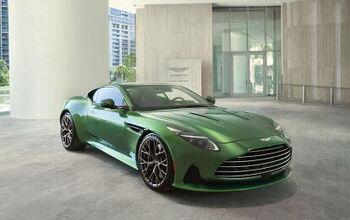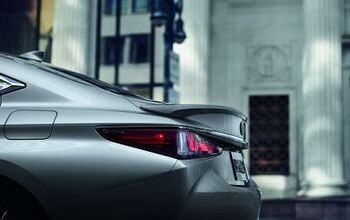Ford Spends $1.3B on Super Duty Plant in Kentucky So You Don't Have To Wait Again

Ford announced Tuesday that it would spend $1.3 billion to retool, update and build a new body shop for its Louisville, Kentucky plant, which produces its Super Duty truck and large SUVs.
The announced spending, which will create 2,000 jobs at the plant, is part of Ford’s new contract with the United Auto Workers — and part of the automaker’s last deal with the UAW, according to Automotive News.
The investment will create an all-new body shop for the aluminum-bodied truck scheduled to go on sale late next year. With an all-new shop, production of the outgoing truck can continue while the new shop gets online, which could help the automaker avoid another shortage when the redesigned truck hits dealers.
This year, Ford had smaller F-150 inventories than normal because its Dearborn, Michigan and Kansas City facilities were closed as the automaker retooled for the next generation, aluminum bodied, light-duty pickup. Ford said its inventories didn’t fully recover until late in the second quarter of 2015.
Ford said the $1.3 billion investment will add to its $80 million investment at the truck plant in 2014 and a $129 million investment at nearby Louisville Assembly, which produces the Lincoln MKC and Ford Escape.
“Adding new jobs and more investment at Kentucky Truck Plant not only secures a solid foundation for our UAW members, but also strengthens the communities in which they live, work and play,” Jimmy Settles, UAW vice president said in a statement. “Such success highlights our members’ hard work and dedication to building world-class, quality vehicles like the Super Duty.”
According to WDRB in Louisville, workers at the Kentucky Truck Plant two weeks ago rejected the latest deal with the automaker by 2-to-1.

More by Aaron Cole
Latest Car Reviews
Read moreLatest Product Reviews
Read moreRecent Comments
- Lou_BC Well, I'd be impressed if this was in a ZR2. LOL
- Lou_BC This is my shocked face 😲 Hope formatting doesn't fook this up LOL
- Lou_BC Junior? Would that be a Beta Romeo?
- Lou_BC Gotta fix that formatting problem. What a pile of bullsh!t. Are longer posts costing TTAC money? FOOK
- Lou_BC 1.Honda: 6,334,825 vehicles potentially affected2.Ford: 6,152,6143.Kia America: 3,110,4474.Chrysler: 2,732,3985.General Motors: 2,021,0336.Nissan North America: 1,804,4437.Mercedes-Benz USA: 478,1738.Volkswagen Group of America: 453,7639.BMW of North America: 340,24910.Daimler Trucks North America: 261,959

































Comments
Join the conversation
Being in a state that heavily salts its roads during winter, I'm all for aluminum bodied PU trucks. I didn't realize Ford was also going that route with their new HD model. Good for them.
I don't see frame rust as a big issue in the part of British Columbia where I live. My 2010 F150 has been fine so far. I had an F250 for 15 years and no issues. I suspect once again we seen our Australian friend continuing on with his anti-Ford anti-aluminum commentary.